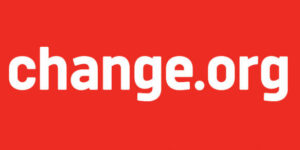The Great Rated!™ Interview: Kim Peters on Employer Brand
The CEO of Great Rated! talks about the central role of employee surveys in employer brands, how Great Rated! works, and about the growing importance
The CEO of Great Rated! talks about the central role of employee surveys in employer brands, how Great Rated! works, and about the growing importance
Recruitment is a constant battle for HR. It’s a persistently nagging requirement, it never goes away. Just as soon as you think you’ve got enough

The social era is creating a whole new level of opportunity for business and personal brands. Are you making the most of it?

What methods make sense in evaluating potential hires? The #TChat crowd shares wisdom from experience

If you want to know how people can contribute to your company, why not take a test drive? Wordpress co-founder Matt Mullenweg explains

How can your company do a better job of making hiring choices in today’s competitive marketplace? Let’s talk at #TChat Events

After years of working closely with leaders in every kind of organization, Ted Coine opens up about a missing piece in the leadership toolkit.

Employers: Are you hiring tech talent for the right reasons? Take a closer look at workforce motivations…

As technology grows more integral to daily life, demand for tech-savvy talent is relentless. How can employers hire the best?

Are you selling products to a market? Or are you investing in relationships that will lift your brand? Community counts.

How can leaders revitalize business cultures? Symbols may not seem essential, but let’s take a closer look

There’s something fundamentally broken with the way employers treat potential employees. Change is long overdue. Let’s fix this…

You don’t know you need outplacement until you really need it. However, it’s never too soon to pick a provider — here’s why.

Social media is redefining influence in all respects. What does this mean for employer and personal brands? Let’s talk about it…

Is mobile recruiting here to stay? How can employers make the most of this opportunity? Highlights from our community events

When you’re filling open positions, it’s wise to pay attention to all job seekers — even if they aren’t a fit. Here are 4 reasons why — and tips to help

“Best practices” are great. Unless they’re not. Here are six recruiting practices that aren’t helping the hiring process. It’s time to let go…

Social engagement is not a management overlay on a toxic culture. It’s not a Band-Aid, a work-around or a cure-all. But what DOES it take to be an effective social leader in today’s world of work?

World-class employers work overtime to create an environment that attracts new talent and keeps existing employees on board. What can the rest of us learn from them? Ask yourself 4 questions…